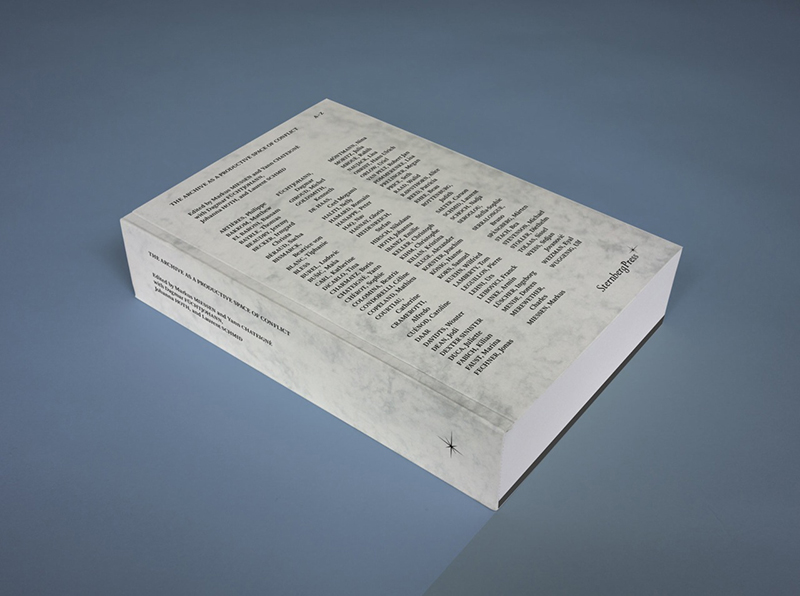Archival Practice Research
The Archive as a Productive Space of Conflict
2011
Karlsruhe+
HfG Karlsruhe
Other Locations: Geneva, CH
Project in collaboration with HfG Karlsruhe and Haute Ecole d’Art et de Design Geneva (HEAD)
- Devised and organized by Prof. Markus Miessen (Karlsruhe and Geneva)
- Supported by Prof. Yann Chateigne & Prof. Laurent Schmid
The applied research project and forthcoming publication “The Archive as a Productive Space of Conflict”, based at the University of Arts and Design Karlsruhe (HfG) in cooperation with Haute Ecole d’Art et de Design Geneva (HEAD), was dealing with archival practice and its spatial repercussions. Inquiring whether any accumulation and organization of knowledge is productive – to the effect that it generates a narrative and/or history – this project focused specifically on archives becoming productive due to their spatial framework. Consequently, the project debated the conflicts that arose when the topological and architectural structure of archives overcame existing models of reservoirs and storage units.
What are the processes making archives productive? Conventional archives tend to define themselves through content-specific, quantitative accumulation of matter, subscribing to an existing, pre-established order. They rarely transform their structures. In contrast to such accumulative model of archival practice and preservation, the productive archive offers an open framework, which actively transforms itself and therefore allows for the constant production of new and surprising relationships. Attempting to illustrate how spaces of knowledge can be devised, developed, and designed, such archive reveals itself as a space of conflict, one in which documents and testimonies open up a stage for productive dispute and struggle. Over the past decade, conflict has been theorized not simply as that which is contained in space, but rather that which is productive of space itself. Often, it is the individual archivist, who presents the archive with the ability for those conflicts to be played out. In the case of the productive archive, the archivist is understood as an active sparring partner and enabler of new relationships rather than a collector or consensual mediator.
Exploring non-traditional archives, such as the wandering Hans-Ulrich Obrist archive, the Sitterwerk St. Gallen, and the by-products generated by Merve publishers, this inquiry attempted to offer new perspectives on archival practice. More specifically, the project interrogated whether archives necessarily need to be exposed to spatial permanence, and – if so – what design framework has to be applied in order for those components to be able to take on more than a singular form of existence. Likewise, what is the relevance of single-location versus nomadism, physical versus virtual access, questions of potential public(s), and means of production, to name a few?
Based on the central question regarding spatial methods in the light of presentability of content, the project inquired the integration of spatial design, content networks, curatorial concepts and organizational frameworks into a single, holistic approach. Hence, those disciplinary crossovers begin to inform a modus operandi towards an applied theory of the archive as a productive space of conflict.












